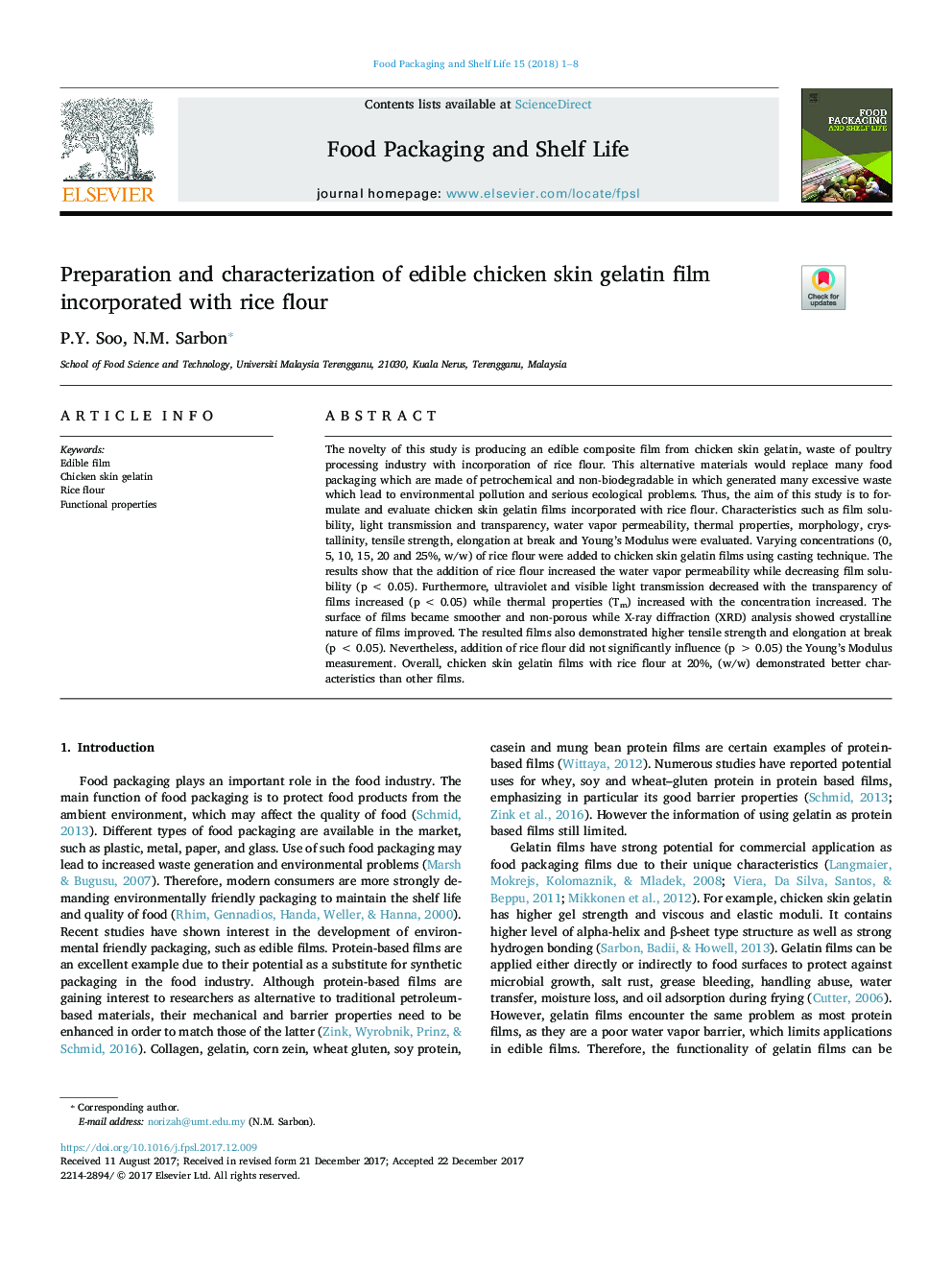| Article ID | Journal | Published Year | Pages | File Type |
|---|---|---|---|---|
| 6489243 | Food Packaging and Shelf Life | 2018 | 8 Pages |
Abstract
The novelty of this study is producing an edible composite film from chicken skin gelatin, waste of poultry processing industry with incorporation of rice flour. This alternative materials would replace many food packaging which are made of petrochemical and non-biodegradable in which generated many excessive waste which lead to environmental pollution and serious ecological problems. Thus, the aim of this study is to formulate and evaluate chicken skin gelatin films incorporated with rice flour. Characteristics such as film solubility, light transmission and transparency, water vapor permeability, thermal properties, morphology, crystallinity, tensile strength, elongation at break and Young's Modulus were evaluated. Varying concentrations (0, 5, 10, 15, 20 and 25%, w/w) of rice flour were added to chicken skin gelatin films using casting technique. The results show that the addition of rice flour increased the water vapor permeability while decreasing film solubility (pâ¯<â¯0.05). Furthermore, ultraviolet and visible light transmission decreased with the transparency of films increased (pâ¯<â¯0.05) while thermal properties (Tm) increased with the concentration increased. The surface of films became smoother and non-porous while X-ray diffraction (XRD) analysis showed crystalline nature of films improved. The resulted films also demonstrated higher tensile strength and elongation at break (pâ¯<â¯0.05). Nevertheless, addition of rice flour did not significantly influence (pâ¯>â¯0.05) the Young's Modulus measurement. Overall, chicken skin gelatin films with rice flour at 20%, (w/w) demonstrated better characteristics than other films.
Related Topics
Physical Sciences and Engineering
Chemical Engineering
Bioengineering
Authors
P.Y. Soo, N.M. Sarbon,
